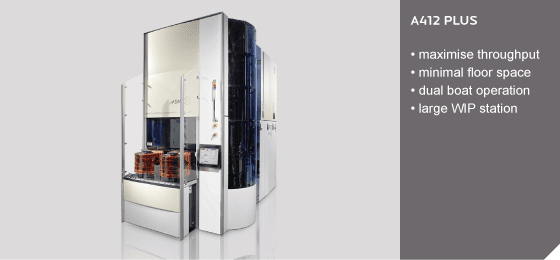At the recent AVS ALD2022 Conference in Ghent, Belgium, I made several rounds in the ALD industrial exhibition and met up with Chipmetrics Oy from Finland. Chipmetrics produce test structures, chips, and wafer concepts for advanced materials and microelectronics manufacturing, many specifically for ALD. Their main product – PillarHall test chip – is developed for advanced thin film process conformality characterization to accelerate applications of conformal 3D thin films. The Pillar Hall test chip has a lateral, very high aspect ratio structure to determine conformality when developing new ALD hardware, processes, and precursors.
Chipmetrics at AVS ALD2022 in Ghent, Belgium (Lower photo: Zahra Ghaderi, Mikko Utriainen and James Song)
What caught my eye this time was their new vertical high aspect ratio test chip - VHAR1 silicon test chip which consists of an array of vertical high aspect ratio holes. The holes have a constant hole diameter of 1 μm, and a depth of 200 μm over the whole chip area 15 × 15 mm. The deposited film penetration depth profile can be measured by cross-sectioning as normally done with the vertical high aspect ratio test structures.
This structure resembles the situation in semiconductor devices such as DRAM, 3DNAND, and TSVs. It can undoubtedly get valuable information and understanding when developing ALD processes for large surface areas with high aspect ratios. Anyone that has developed new ALD processes knows that not only the aspect ratio plays a role but also the total surface area since you need to achieve a sufficient dose of the precursors at the right process conditions to achieve perfect conformality very fast to be productive and minimize precursor decomposition, "CVD effects" and have effective purging of precursors and ALD process byproducts.
For more information, please find contact information here to Chipmetrics: LINK
Links
PillarHall – introduction in SlideShare
PillarHall – introduction in YouTube
PillarHall – short introduction in YouTube
Video: How to use PillarHall test chip
PillarHall Web Site
About Chipmetrics:
Chipmetrics is a forerunner in productizing test structures, test chips, and wafer concepts for advanced materials and microelectronics manufacturing.We are experts in thin film conformality characterization. Our main product – PillarHall test chip – is developed for advanced thin film process conformality characterization to accelerate applications of conformal 3D thin films.
Chipmetrics Oy is a part of the emerging Atomic Layer Deposition (ALD) industry and research community. Our headquarters are in Finland – in the country of the origin of ALD.



%20(1).png)
























